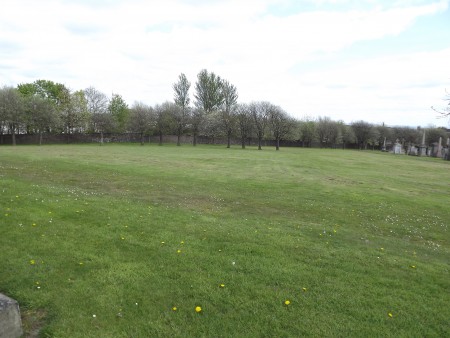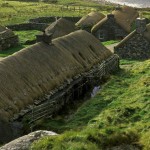Some of the best resources for genealogy research are death records. This isn’t limited to statutory records, but included burial records, cemetery records, and lair records as well.
While we all learn to use monumental inscriptions, we have to bear in mind that until the 1700s, very few people in Scotland had headstones, and in fact, few cemeteries existed. Many rural and more remote areas had a segregated place in community for the burial of the dead. These were not what we know today as cemeteries. There are neither headstones nor burial records for many of the people interred in these places. Sometimes there will be notations in family bibles. Sometimes Kirk records will make mention, but for the most part, these early burials were undocumented unless the deceased had some money or status within the community.
By the turn of the 18th century, we start to see burial grounds specifically attached to the Kirks, and many with headstones marking graves/lairs for those interred. However, not everyone could afford their lair. Any many more were unable to afford a headstone. We often see common ground burials where large numbers of people are interred. This also extended to the majority of those who died during times of epidemic illnesses, such as typhoid or the plague. In these instances, bodies were rounded up en masse and buried together in one grave. Few names, if any, were recorded. Often the deaths themselves were not registered either during periods of epidemic illnesses.
During the 18th century, we also start to see documentation in the Kirk records, either in the parish registers or in the Kirk Session records with regards to burials. This is often in the financial records for the Kirk or parish and includes items such as:
- rental of candles
- rental of mortcloth
- payment for lair
- rental or use of the Kirk’s bier
- sometimes there are references to meals for the funeral
Mortcloths were used for the dressing of the body in cases where no coffin was used. Pauper burials, for example, did not include a coffin.
In cases where coffins were used, the mortcloth was draped over the casket.
There were three types of Mortcloth:
- Best mortcloth – this was generally made of velvet, cost more to rent and was saved for the better heeled of the community. Well to do families often had their own mortcloth and had no need to rent one from the kirk. Rental fees for Best mortcloth may have averaged between 6-11/
- Regular mortcloth – this was plush but not as elegant as velvet. Rental fees for Regular mortcloth was often between 3-5/
- Child’s mortcloth – this was a smaller version of the Regular mortcloth. Rental fees for a Child’s mortcloth was generally 2/ or less
The parish registers and Kirk session records are available at the National Archives in Edinburgh. The OPRs are available online. (http://www.scotlandspeople.gov.uk) The Kirk Session records are not. In some instances, local family history societies will have copies or transcribed copies of the parish records for their area.
If there was a headstone, this often provides an incredible amount of information not only on the deceased, but also on the descendants. The local family history societies in Scotland have transcribed the headstones in the cemeteries in their region. A listing of the family history societies can be found here: http://www.safhs.org.uk/.
Many are also available online at: https://www.scottish-monumental-inscriptions.com/
Another website, which includes burial records, headstone inscriptions and cremation records is https://www.deceasedonline.com/. This website covers the whole of the UK and is a work in progress in that new records are constantly being added.
Death certificates became mandatory in 1854 requiring ALL deaths to be registered. This was ahead of the statutory documentation which started in 1855. The death certificates have a wealth of information including name of spouse (and any previous spouses), names of each parent, date, place and cause of death and the name of the informant, as well as the informant’s relationship to the deceased. Often this is a family member. The statutory death registrations are available on ScotlandsPeople at: http://www.scotlandspeople.gov.uk
Quite often the local crematorium will have the records for the cemeteries in their jurisdiction. If they don’t then the local archives will have them. These records usually have the information on the burial plot (lair) and a list of all people interred within. This may well include other family members and in-laws.
Best of luck with your Scottish genealogy research!
Scottish born, Canadian raised, Christine had the best of both worlds, growing up immersed in Scottish culture. Realizing that others of the Scots diaspora were not as fortunate, she started her business, Genealogy Tours of Scotland to allow others researching their Scottish roots the opportunity to return to the land of their ancestors, conduct family history research and deepen their sense of belonging to their ancestral kin.








Thank you for sharing all this valuable information, Christine. I don’t have time to absorb much of it today, but will make some time for exploring all these resources before I see you in Kelowna in April.
No worries, Sharon. We will actually look at this in more depth during the talks in Kelowna. See you in 3 weeks!
Do you write all your own blogs and all the information in them, word for word?
Yes, Leanne, I do. Otherwise it would be plagiarism.